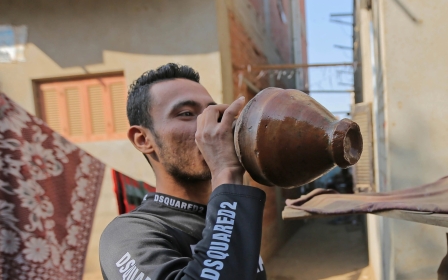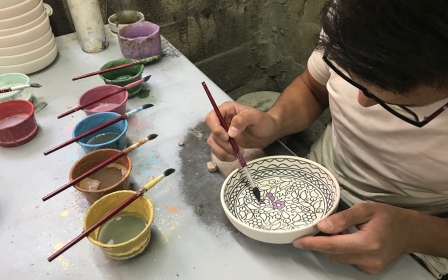In pictures: Inside Gaza's traditional pottery industry
Gaza has been inhabited by humans since prehistory and as civilisations in Egypt and the Near East developed, the area took on special importance due to its location between the continents of Asia and Africa. An early aspect of human development was the invention of pottery and archaeologists have uncovered clay artefacts at a site called Tell el-Ajjul that date back to around 1,500 BCE. Gaza's terrain includes large amounts of "terra rossa" soil, which is a red and clay-rich porous soil that is ideal for use in pottery. To this day, Gaza is considered a centre for the Palestinian pottery industry. The area, which is besieged by Israel and is subject to import and export restrictions, is home to workshops and factories producing pots, vases, plates, and other clay-derived products. (All photos by Mohammed al-Hajjar)
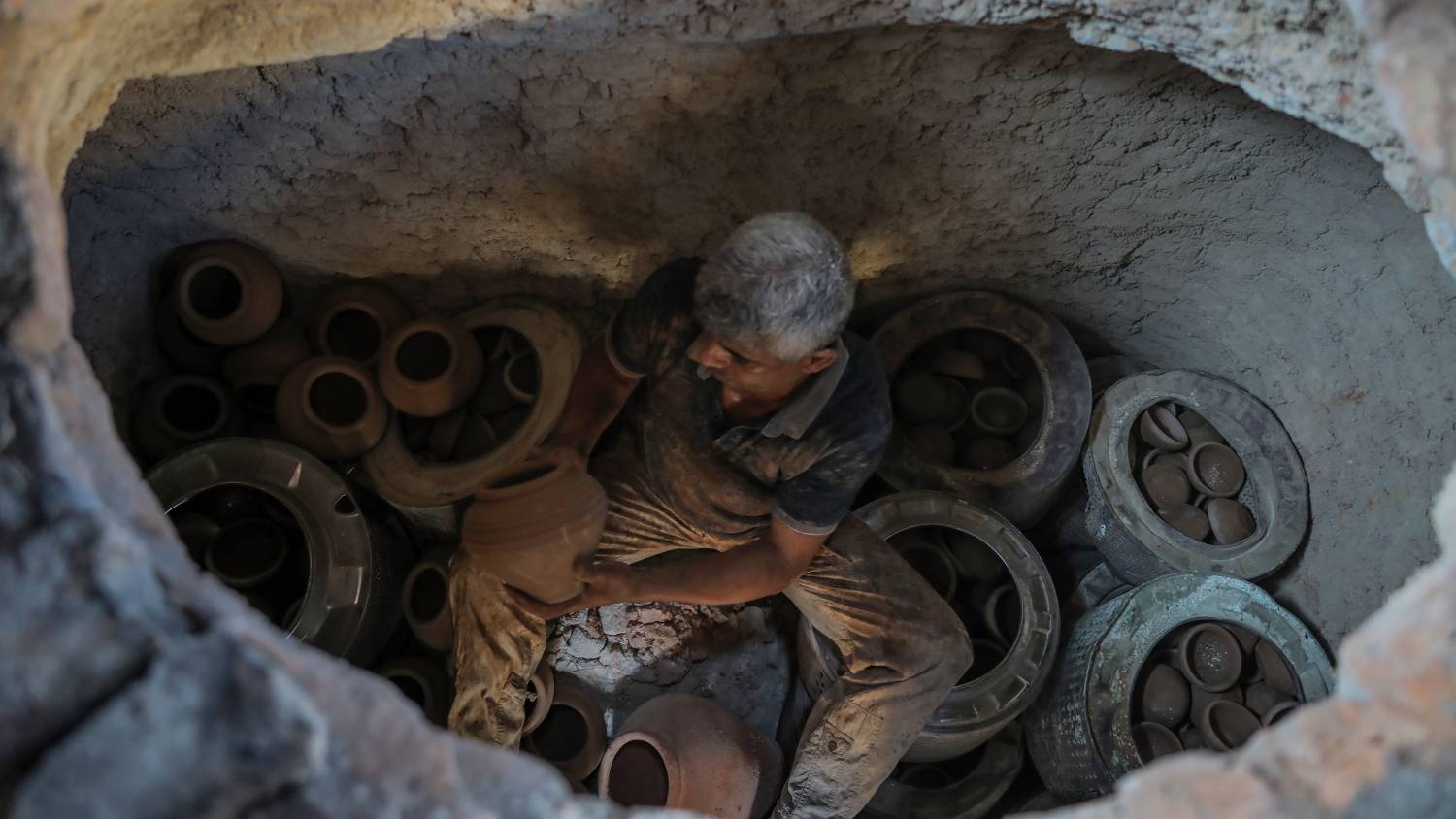
One of the most well known families in the pottery industry in Gaza is the Atallah family, which is today run by Hajj Mohammed Atallah. With over half a century's worth of experience, the senior Atallah has passed on his skills to his brothers, cousins, children, and grandchildren. Pictured above is his son Mustafa surrounded by some of the family's products.
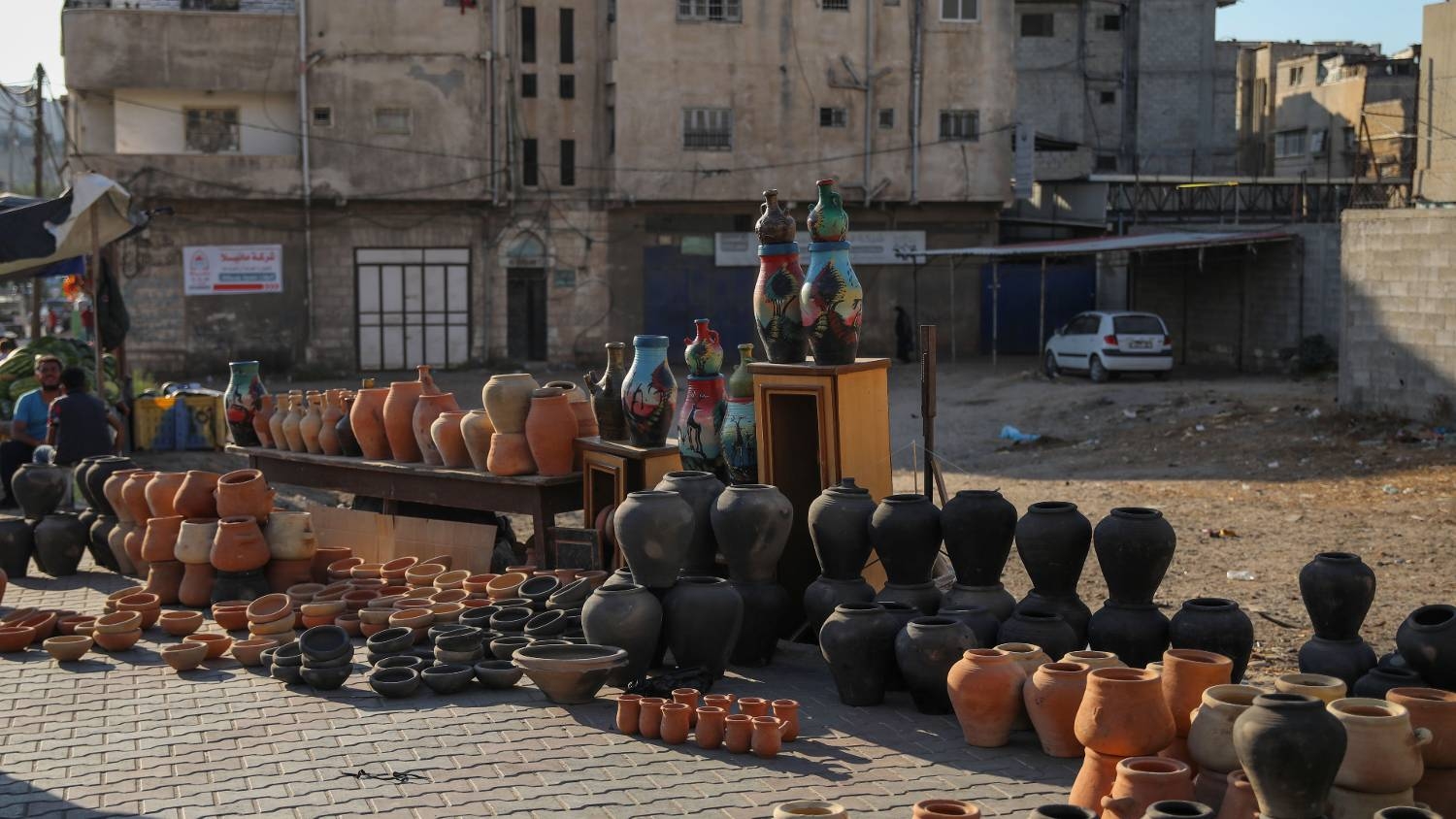
The rise of industrial society means that most residents of Gaza now use cheaply produced and imported glass, metal, and plastic utensils at home. Clay pots and vases are not as ubiquitous as they once were but they have a cultural value and many Palestinian families will keep large clay vessels like the ones above to store water and keep it cool. The Atallah family produces items like vases, plant pots, and jugs in seven factories that are distributed across Gaza. Before the Second Intifada, which broke out in 2000, they would export pottery to the occupied West Bank, Jordan, and some Gulf countries. Exports have now slowed to a trickle but some visitors to Gaza buy their products as souvenirs.

Over the millennia, the craft of pottery has remained largely the same. First, the raw clay is cleaned of impurities by passing water through it and then it is moulded into shape using a manual potter's wheel. The moulded shape is then left out to dry. According to the Atallah family, in times of high demand, their workshops can produce thousands of products in a matter of days. Summer is a good time to produce clay vessels due to the baking effect of the sun, but production slows down in the winter.
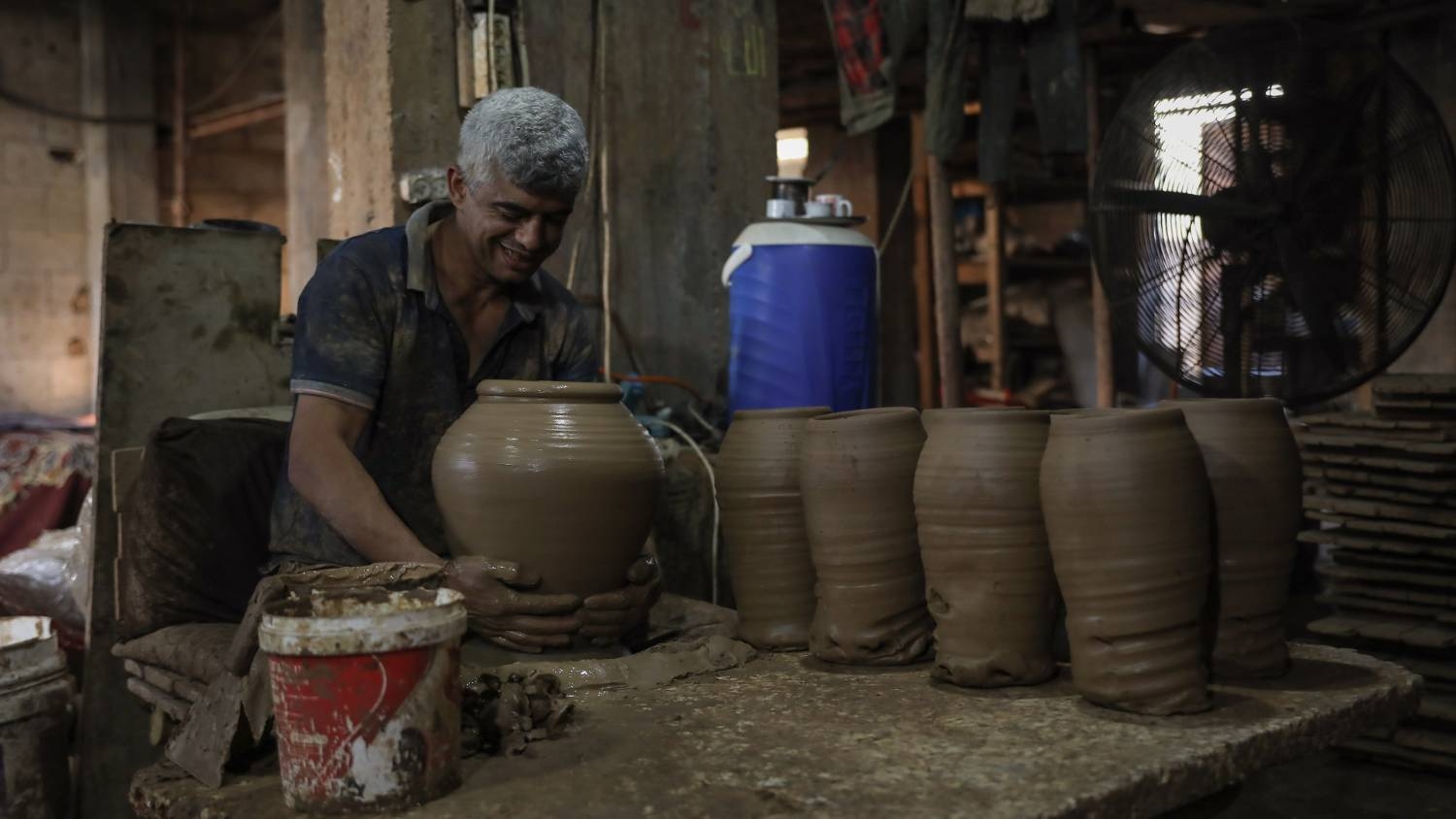
It takes about a week for the pottery to be ready for use. After the clay has been moulded and shaped, it's left to dry for at least two days, as even trace levels of of moisture can cause the pot to crack quickly. The product is then ready to be transferred to the kiln to bake. Each of the seven Atallah factories in Gaza has its own kiln, with temperatures inside reaching 800 degrees Celsius. The kilns must be manually lit, with family workers supervising the process. After baking, the pots are then left to rest for at least a day before they are ready for use.

In Gaza City there is an area known as Al-Fawakhir, which is known for selling Gazan clay pottery. Locals buy clay pottery for use in cooking, as home decorations, serving food, storage, or as gifts.

Some Gaza residents feel resentment at having to live in such close proximity to the fumes and smells that are produced by the pottery factories. Most don't have a choice to live elsewhere as Gaza is crowded, its population is steadily growing, and travel in and out of the region is restricted by Israel.
Middle East Eye delivers independent and unrivalled coverage and analysis of the Middle East, North Africa and beyond. To learn more about republishing this content and the associated fees, please fill out this form. More about MEE can be found here.



